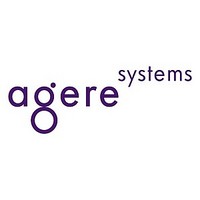ATTL7554BP Agere Systems, ATTL7554BP Datasheet - Page 24

ATTL7554BP
Manufacturer Part Number
ATTL7554BP
Description
L7554 Low-Power SLIC
Manufacturer
Agere Systems
Datasheet
1.ATTL7554BP.pdf
(28 pages)
Available stocks
Company
Part Number
Manufacturer
Quantity
Price
L7554 Low-Power SLIC
Applications
ac Design
There are four key ac design parameters. Termination
impedance is the impedance looking into the 2-wire
port of the line card. It is set to match the impedance of
the telephone loop in order to minimize echo return to
the telephone set. Transmit gain is measured from the
2-wire port to the PCM highway, while receive gain is
done from the PCM highway to the transmit port.
Finally, the hybrid balance network cancels the
unwanted amount of the receive signal that appears at
the transmit port.
At this point in the design, the codec needs to be select-
ed. The discrete network between the SLIC and the
codec can then be designed. The following is a brief
codec feature and selection summary.
First-Generation Codecs
These perform the basic filtering, A/D (transmit), D/A
(receive), and -law/A-law companding. They all have
an op amp in front of the A/D converter for transmit gain
setting and hybrid balance (cancellation at the summing
node). Depending on the type, some have differential
analog input stages, differential analog output stages,
and -law/A-law selectability. This generation of codecs
have the lowest cost. They are most suitable for appli-
cations with fixed gains, termination impedance, and
hybrid balance.
24
24
(continued)
Second-Generation Codecs
This class of devices includes a microprocessor inter-
face for software control of the gains and hybrid bal-
ance. The hybrid balance is included in the device. ac
programmability adds application flexibility and saves
several passive components and also adds several I/O
latches that are needed in the application. However,
there is no transmit op amp, since the transmit gain and
hybrid balance are set internally.
Third-Generation Codecs
This class of devices includes the gains, termination
impedance, and hybrid balance—all under micropro-
cessor control. Depending on the device, it may or may
not include latches.
Selection Criteria
In the codec selection, increasing software control and
flexibility are traded for device cost. To help decide, it
may be useful to consider the following. Will the appli-
cation require only one value for each gain and imped-
ance? Will the board be used in different countries with
different requirements? Will several versions of the
board be built? If so, will one version of the board be
most of the production volume? Does the application
need only real termination impedance? Does the hybrid
balance need to be adjusted in the field?
In the following examples, use of a first-generation co-
dec is shown. The equations for second- and third-gen-
eration codecs are simply subsets of these. There are
two examples: The first shows the simplest circuit,
which uses a minimum number of discrete components
to synthesize a real termination impedance. The second
example shows the use of the uncommitted op amp to
synthesize a complex termination. The design has been
automated in a DOS-based program, available on re-
quest.
Lucent Technologies Inc.
March 1997
Data Sheet











